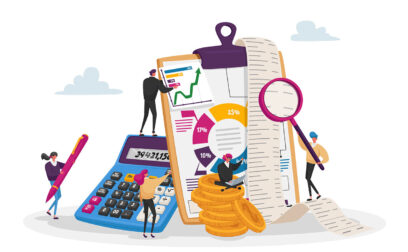Knowing how to forecast cash flow is an important part of financial planning when you run a business. Maintaining a healthy cash flow is essential so that you can plan ahead effectively and have money available in the event of an emergency.
This guide explains all you need to know about creating a cash flow forecast.
What is cash flow?
Cash flow is a measurement of the amount of cash that comes into and goes out of your business over a period of time.
Cash that comes in is usually the money you get from sales, but it might also be from selling assets or receiving a grant, for example. Outgoing cash will include wages, bills, and payments to suppliers.
If you have positive cash flow, this means you have more cash coming into your business than you have going out. On the other hand, when your cash flow is negative, you have more cash going out of your business than you have coming in. This can make it difficult to cover bills and other expenses, particularly if it lasts for a lengthy period of time.
Why measure cash flow
Measuring cash flow is important because it helps you to meet your existing financial obligations and plan for the future. Cash flow measurement can be the difference between business success and failure.
Benefits of cash flow forecasting
A cash flow forecast can enable you to assess if and when you’re going to run out of money so that you can plan ahead. It might help you to work out whether you need to reduce overheads or find new investment.
Forecasting cash flow can also help you to assess when your business is doing well. This could encourage you to expand into new markets, hire new staff or invest in new products. Knowing how well your business is doing can help you to establish whether you can afford to make these changes.
How to forecast your cash flow
Follow the steps below to help you get started and forecast your cash flow:
Decide the period you want to forecast for
Your first step is to decide how long you want to forecast for. You can forecast over a period from a few weeks to several months, it’ll depend on how far ahead you can accurately predict. If your business has been running for several years, you might be able to use sales data from previous years to guide you. But if you’re a new business, you might need to keep your forecasts to a shorter period as you might not have as much data available.
If you are unable to forecast too far ahead, don’t worry as your cash flow forecast can change over time. In fact, it’s a good idea to update it regularly.
Collate all your income
Next, for each week or month in your forecast, list all the cash you have coming in to the business. It’s sensible to have one column for each week or month and one row for each type of income.
Start with your sales and add them to the correct week or month. If you have previous years’ figures, this can help you. Just bear in mind your forecast needs to show when the cash is actually in your bank account. This means you need to add the figures in for when you know clients will have paid invoices or bank payments will have cleared.
You’ll also need to include non-sales income, such as tax refunds, grants, and investments from shareholders.
Then add up the total for each column to work out your net income.
List all of your business outgoings
As well as understanding what you have coming in, you also need to know what you have going out. Make a similar list of all the money you’ll be spending, such as:
- Rent
- Wages
- Assets
- Business loans, including fees
- Raw materials
- Tax
- Marketing and advertising
Then add up the total for each column to get your net outgoings.
Work out your running cash flow
For each week or month, you now need to take away your net outgoings from your net income. This will give you either a positive cash flow figure or a negative one.
You’ll then be able to keep a running total, whether that’s week to week or month to month, so that you can better understand your cash flow forecast over time.
If you have a long period of negative cash flow, this could be problematic and you will need to see what you can do to ensure you have enough cash to cover your bills. But on the flipside, if you have a positive cash flow for several months, you might find it’s the right time to expand or invest.
Review estimated cash flows against actual
Once you’ve done your cash flow forecast, it’s important to go back and check what you estimated against the actual cash flows for the period. That way you’ll be able to spot any differences between estimated and actual so that you can see why your cash flow didn’t meet your expectations.
Top tips to ensure accuracy when forecasting cash flow
To help ensure your cash flow forecast is accurate, it’s important to keep the following points in mind:
- Consider how seasonal changes could affect your cash flow and allow some wriggle room for this.
- During months of positive cash flow, stash some of this away in your savings to help you out when times are tougher.
- Always include bills, subscriptions and annual registrations.
- Update your forecast on a regular basis with new information.

































 yet? Register here!
yet? Register here!